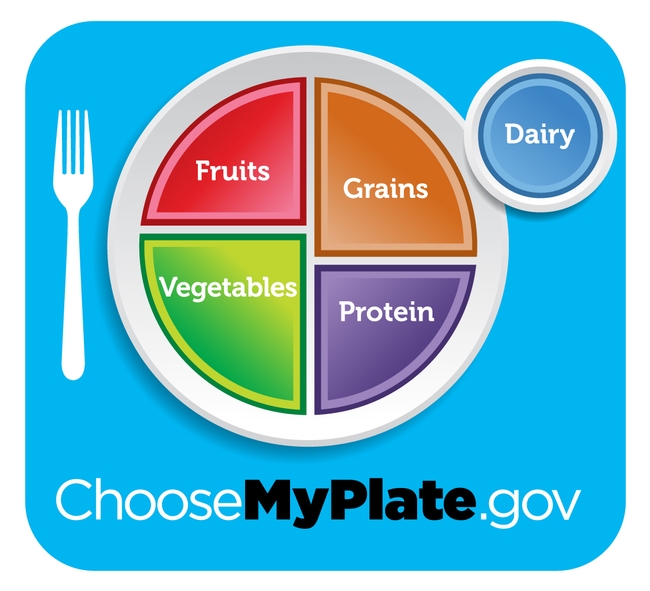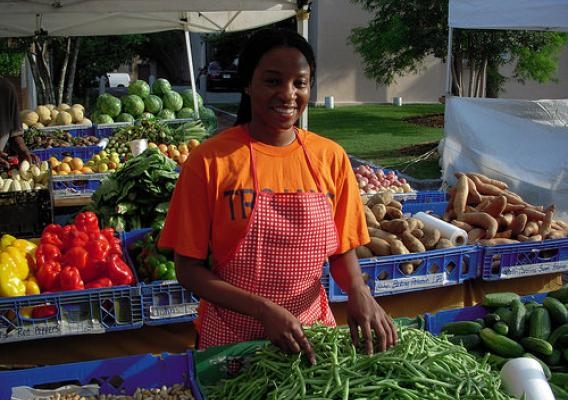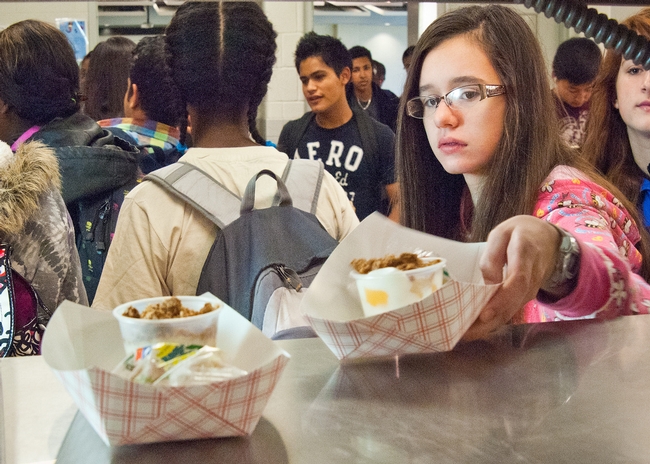Farmers grow lettuce, spinach, broccoli and other vegetables in California's Imperial Valley, Central Valley, Salinas Valley and far northern counties. However, these nutritious foods are not readily available to local low income communities.
“Children often don't have access to healthy food options,” said Christopher Gomez Wong, UC Cooperative Extension nutrition educator in Imperial County. “I'm from the Imperial Valley and often the fruits and vegetables grown here are not sold in local markets.”
According to the non-profit organization Feeding America, almost 2.5 million young people in the United States do not have access to nutritious food.
“In California, one of every six children lives in a home where it's difficult to get the amount of nutritious food needed for their families,” said Lorrene Ritchie, director of the UC Nutrition Policy Institute. “We call this ‘food insecurity.'”
A study by UC Agriculture and Natural Resources (UC ANR) found that food insecurity increases school absences and behavioral problems, and reduces children's concentration and academic achievement.
Ritchie, who leads a group of experts fighting obesity and food insecurity, said when family income is not sufficient, there is a tendency to buy cheaper foods, generally, junk food.
“If I'm hungry and I don't have much money, I'm going to a fast food restaurant where I can get more calories at a lower price,” Ritchie said. “Fast foods have more calories and cost less, but they typically also contain more sugar, salt and fat.”
For example, research presented at the UC ANR Statewide Conference on food insecurity included a graphic showing that for one dollar, consumers can purchase a bag of potato chips with 1,200 calories or a soda with 875 calories. In contrast, one dollar can buy just 250 calories of fresh vegetables or 170 calories of fresh fruit.
In everyday life, there are many examples of nutritious foods being displaced by junk foods
“We are studying children's eating habits,” Gomez Wong said. “Children aren't eating in the cafeteria and are eating lots of sweets. Five dollars more often buys them chips and a soda than a salad.”
UC ANR works to combat food insecurity in many ways. It implements various ongoing community programs, conducts research and promotes government nutrition programs.
Urban gardens and orchards have a positive impact in low income communities, particularly where families do not have space for their own gardens and are interested in growing their own food. One example is the Community Settlement Association in Riverside. Other cities with similar programs are Sacramento, San Jose, San Francisco, Los Angeles and San Diego.
UC Master Food Preserver Program teaches the public how to preserve food by canning, freezing and drying in order to take advantage lower prices for fruit and vegetables purchased in season.
Expanded Food and Nutrition Education Program (EFNEP) offers free nutrition workshops in most California counties where people can learn how to purchase nutritious foods for less money and how to prepare them.
In addition, there are successful government programs, such as the National School Lunch Program, that provides nutritious foods free or at a reduced cost for children in public schools. The food is aligned with the national food guidelines that promote the consumption of fruits and vegetables, whole grains, lean proteins and low-fat milk.
“Every study we have done shows that school food contributes in an important way to children's nutrition,” Ritchie said. “For example, many children can meet half of their daily nutrition needs from school foods available absolutely free. I encourage all families to review school food programs to assure that their children arrive at school in time for the school breakfast and take advantage of the school lunch.”

“What we are trying to figure out is how to create an environment in which healthy options are the easiest options,” Ritchie said.
She said it would be ideal if supermarkets were designed under in concert with the healthy eating guidelines set forth in MyPlate. That is to say, to have stores where half the space is devoted to fruit and vegetables, a third is grains and whole grains, and another third are proteins, dairy foods and water (although water is not currently on MyPlate.)

